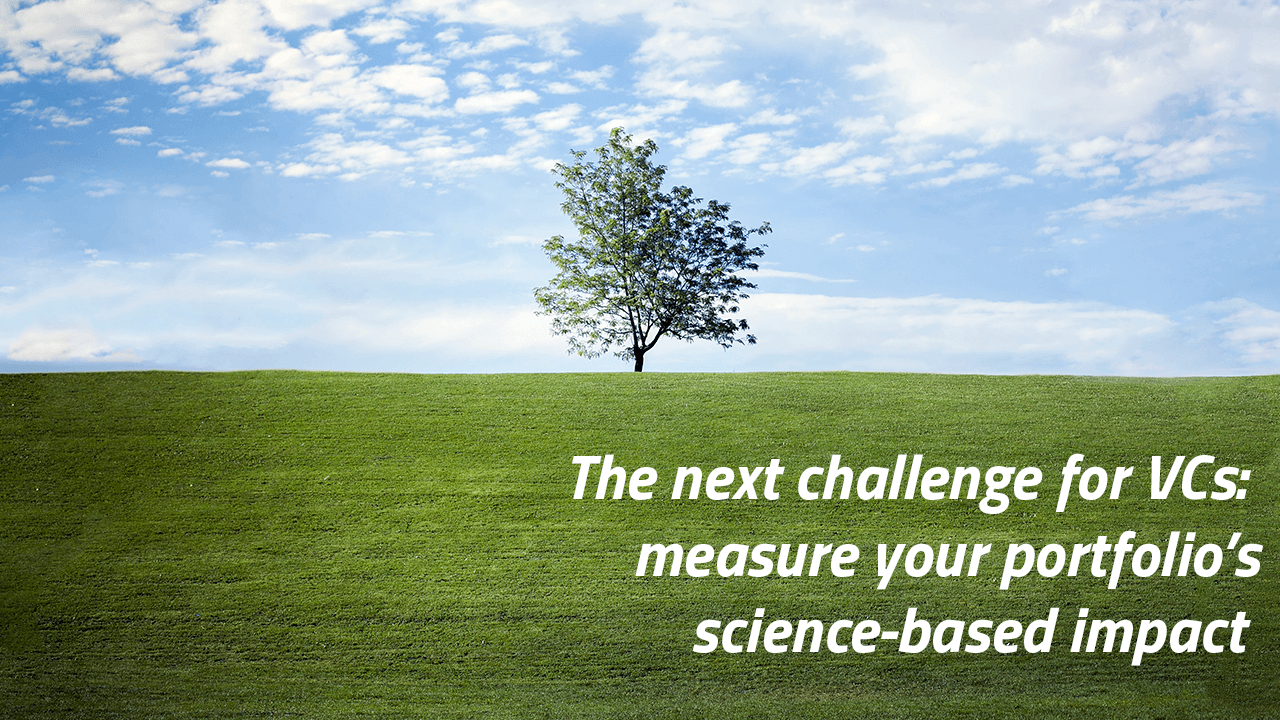Startups have a fairly nice reputation when it comes to impact and sustainability. They don’t usually have big nasty factories or harvest tobacco. They disrupt old ways of working and employ young people. They must be “impact superheroes”, right?
Not quite. As sustainability has entered every business conference program and every other VC’s “differentiating factors” list, criteria for what qualifies as good impact is also changing.
Three years ago, cherry-picking individual impacts and telling qualitative narratives about them was enough to tick the sustainability box. “We invested in this personalised vitamin startup that will improve the health of knowledge workers.” “We compensate emissions for all our portfolio companies.” “Our portfolio companies are committed to filling in this ESG questionnaire we send them.“
Now demands are increasing, driven by both regulation as well as industry standards. The EU Sustainable Finance regulations require all funds to quantitatively report on the sustainability of their investments. At the same time, LPs are asking increasingly difficult questions both within and beyond the regulations, and funds struggle to keep up.
Where is VC money flowing, then? When analyzing the impact of companies that have raised the biggest VC rounds in the 2020s, the verdict is quite clear: Talk is big, action is not quite yet there. “Disruptive technologies” are often merely incremental tweaks to existing solutions. And even for those that do manage to shake things up, the “disruption” might carry a different meaning than intended, as the recent crypto market developments suggest.
While there are great European examples like Northvolt, the lithium-ion battery developer and producer, the majority of the heftiest funded startups are not exactly inspiring with their impact. Companies like Shein, the Chinese online fast fashion retailer whose science-based impact leaves little reason for celebration, remind us that the road ahead of us is still long.
Some VCs try to tackle the increasing ESG/impact demands by engaging in various projects around what sounds like doing things well. A good example of this is diversity, equity, and inclusion (DEI) efforts. This topic is hot and concrete enough. “Let’s demonstrate how we care about (nonexisting) diversity in the startup scene and get some stock photos to back it up!”
The problem with this approach is that taking care of hygiene-level things that were not hygiene-level 30 years ago is not “impact”. It’s just what it is: taking care of the basics and correcting things that are outright off. DEI topics are crucial for any company, but good
diversity policies don’t yet say anything about the impact of a portfolio company’s core business. They don’t tell your LPs what they’re really investing in.
Brutal example: if a tobacco company embarked upon a women-to-leadership-roles program, would it make the impact of their core business net positive? Of course not.
What about CO2 then? Many VCs seem to have concluded this is the way to go: gather lots of scientific-looking estimates from founders and publish them in an effort to be transparent and data-driven.
There are three handicaps in this approach. Firstly, this merely means outsourcing the uncomfortably inaccurate estimating work to the portfolio companies. Secondly, even the best CO2 quantifications tell quite little about a startup’s sustainability: Startups are by definition only doing a fraction of what they are set out to do. Similarly, their emissions today are only a fraction of what they will be if the investors’ money gets any bang for the buck.
Thirdly, in order for emission calculations to be useful for decision-making, the data needs to be coupled with some understanding of what is achieved in the process of causing the emissions. Medical breakthroughs? New roads and bridges? Green energy solutions? Or gambling platforms, or perhaps another 5-euro t-shirt delivered during lunch break to the doorstep of a bored knowledge worker via a beautiful and, dare I say, disruptive UX?
CO2 emissions are a crucial part of a company’s net impact, but tracking them without quantitative evidence of the value created with them tells very little about a startup’s impact on the world.
What does the future hold then for VCs and impact narratives? One thing at least:
Talking about the core business of the startups the fund has invested in is what matters. Not the nice-to-have projects. LPs are not really that excited about your fund’s EU taxonomy alignment and how many sustainability projects you started last year. They care about both the financial and impact implications of whether you’re building the future or trying to hold on to the past.



Would you like to write the first comment?
Login to post comments